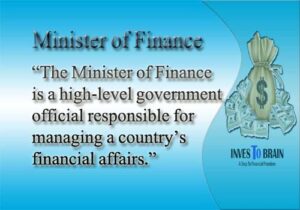Budgeting worksheets for students are tools designed to help students learn how to budget their money effectively.
These worksheets typically include a section for tracking income and expenses, as well as a section for setting financial goals and creating a budget plan.
They may also include information and tips on budgeting best practices, such as setting priorities, tracking spending, and making adjustments as needed.
Budgeting worksheets for students
Budgeting worksheets for students can be a helpful tool for teaching students the basics of budgeting and financial management and can help them develop the skills they need to make informed financial decisions in the future.
Budgeting worksheets for students free
There are many free budgeting worksheets for students available online. Some popular sources for free budgeting worksheets include financial education websites, government websites, and non-profit organizations. Some examples of free budgeting worksheets for students that you can find online are:
- The Balance: https://www.thebalance.com/budget-worksheets-4161911
- Dave Ramsey: https://www.daveramsey.com/blog/free-budget-forms
- Mint: https://www.mint.com/budgeting-2/budget-worksheet
- National Endowment for Financial Education: https://www.nefe.org/tools-and-resources/budget-calculators-and-worksheets/
- Consumer Financial Protection Bureau: https://www.consumerfinance.gov/consumer-tools/budget-planner/
Please note that these are just examples and you can find many other worksheets on the internet. It is important to find a worksheet that fits the student’s needs and preferences, and that is age appropriate.
Budgeting activities for students
There are several budgeting activities that can be used to teach students about budgeting and financial management. Some examples include:
- Creating a budget plan: Have students create a budget plan for themselves, including income, expenses, and savings goals. Have them track their expenses and compare them to their plan to see where they can make adjustments.
- Role-playing: Have students pretend to be adults and plan a budget for a month. They can use real-world scenarios such as paying rent, buying groceries, and going on vacation.
- Budgeting simulation: Use a budgeting simulation game or app that allows students to make financial decisions and see the consequences of their choices.
- Saving challenge: challenge students to save a certain amount of money in a certain period of time, and have them track their progress.
- Field trip: Take students to a bank or credit union, or invite a financial expert to come in and speak to them about budgeting and saving.
- Budgeting project: Assign students a project in which they have to research and create a budget plan for a specific goal, such as saving for a car, a college education, or a trip.
- Real-life examples: Share real-life examples of people who have successfully managed their finances and achieved their financial goals, and have students analyze and discuss what the person did right and what they could have done differently.
These activities are just examples, and you can adapt them to your classroom and student’s needs, but they will help students to understand budgeting in a more interactive and engaging way.
Budgeting scenarios for students
There are several budgeting scenarios that students may face, such as:
- Limited income: Many students have limited income from part-time jobs or financial aid, and must budget carefully to make ends meet.
- Unexpected expenses: Emergencies, such as medical bills or car repairs, can disrupt a student’s budget and require them to find ways to cut expenses or increase income.
- Balancing short-term and long-term expenses: Students may need to balance the cost of immediate expenses, such as rent and groceries, with longer-term expenses, such as tuition and textbooks.
- Managing debt: Some students may have student loans or credit card debt to manage, which can impact their budget and require them to prioritize paying off debt over other expenses.
- Saving for future goals: Students may also need to budget for future expenses, such as saving for a down payment on a house or starting a retirement fund.
Overall, budgeting for students is often a balancing act of managing expenses and maximizing limited income, while also planning for future goals.
Download the Printable Budget Worksheet from Below link
Bottom Line
In conclusion, budgeting worksheets for students are a valuable tool for teaching students about budgeting and financial management.
They provide a structured format for students to track their income and expenses, set financial goals, and create a budget plan.
By using budgeting worksheets, students can learn how to prioritize their spending, track their progress, and make adjustments as needed.
These worksheets can be a helpful resource for students to develop the skills they need to make informed financial decisions and manage their money effectively in the future.
FAQ
How do you teach students budgeting?
What are the 7 steps in a budget?
How do you create a simple budget sheet?
What are the 5 steps in preparing a budget worksheet?
2. List all income: Make a list of all your income, including your salary, any bonuses, rental income, and any other sources of income.
3. List all expenses: Make a list of all your expenses, including fixed expenses such as rent, mortgage, and insurance, and variable expenses such as groceries and entertainment.
4. Categorize expenses: Group similar expenses together, such as housing, transportation, and entertainment.
5. Determine the difference: Subtract your expenses from your income to determine if you have a surplus or deficit, and adjust your budget accordingly.

